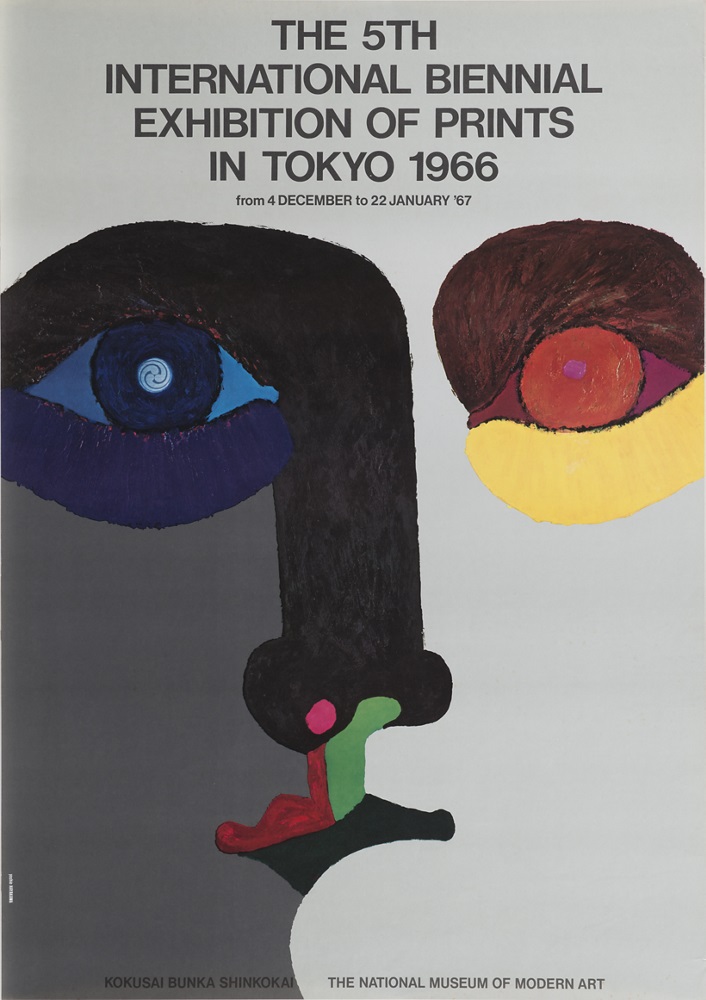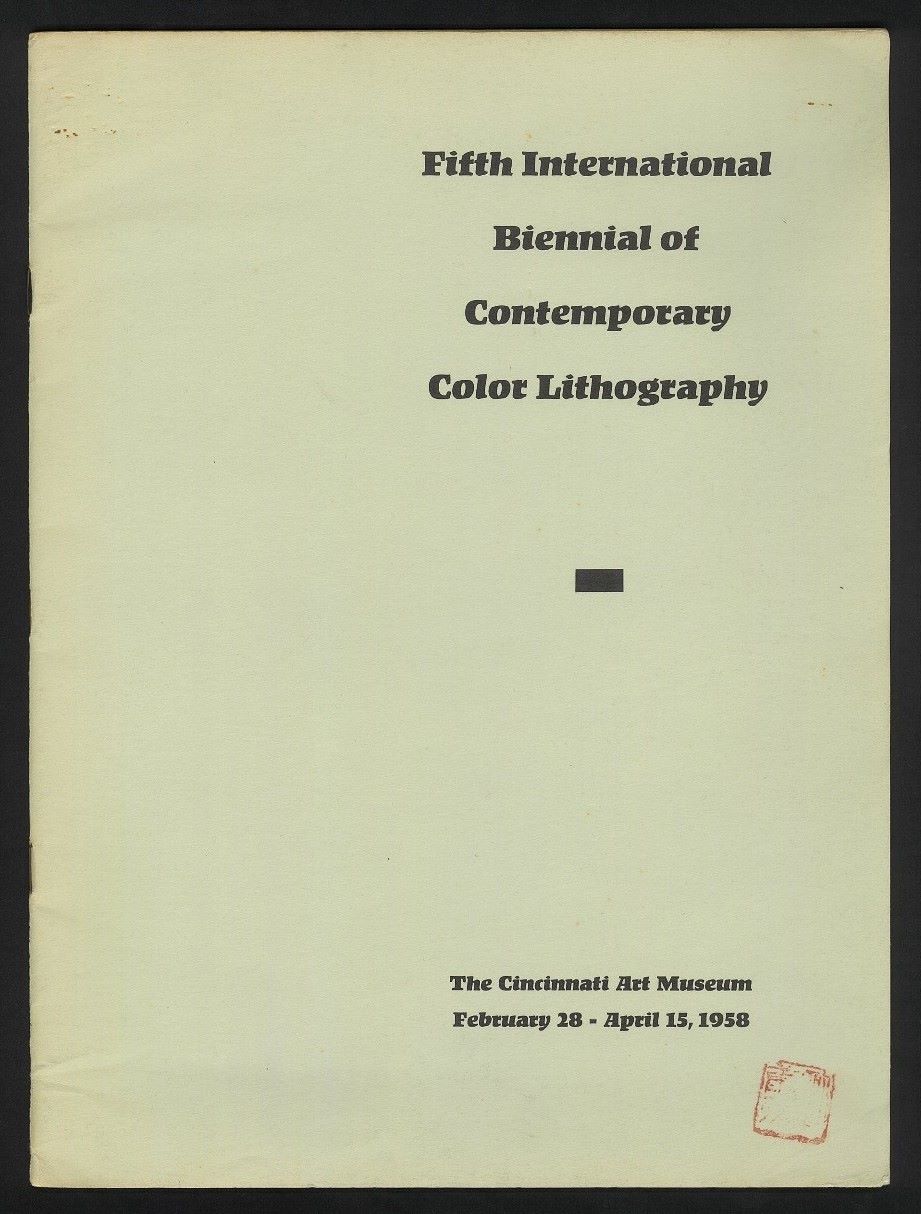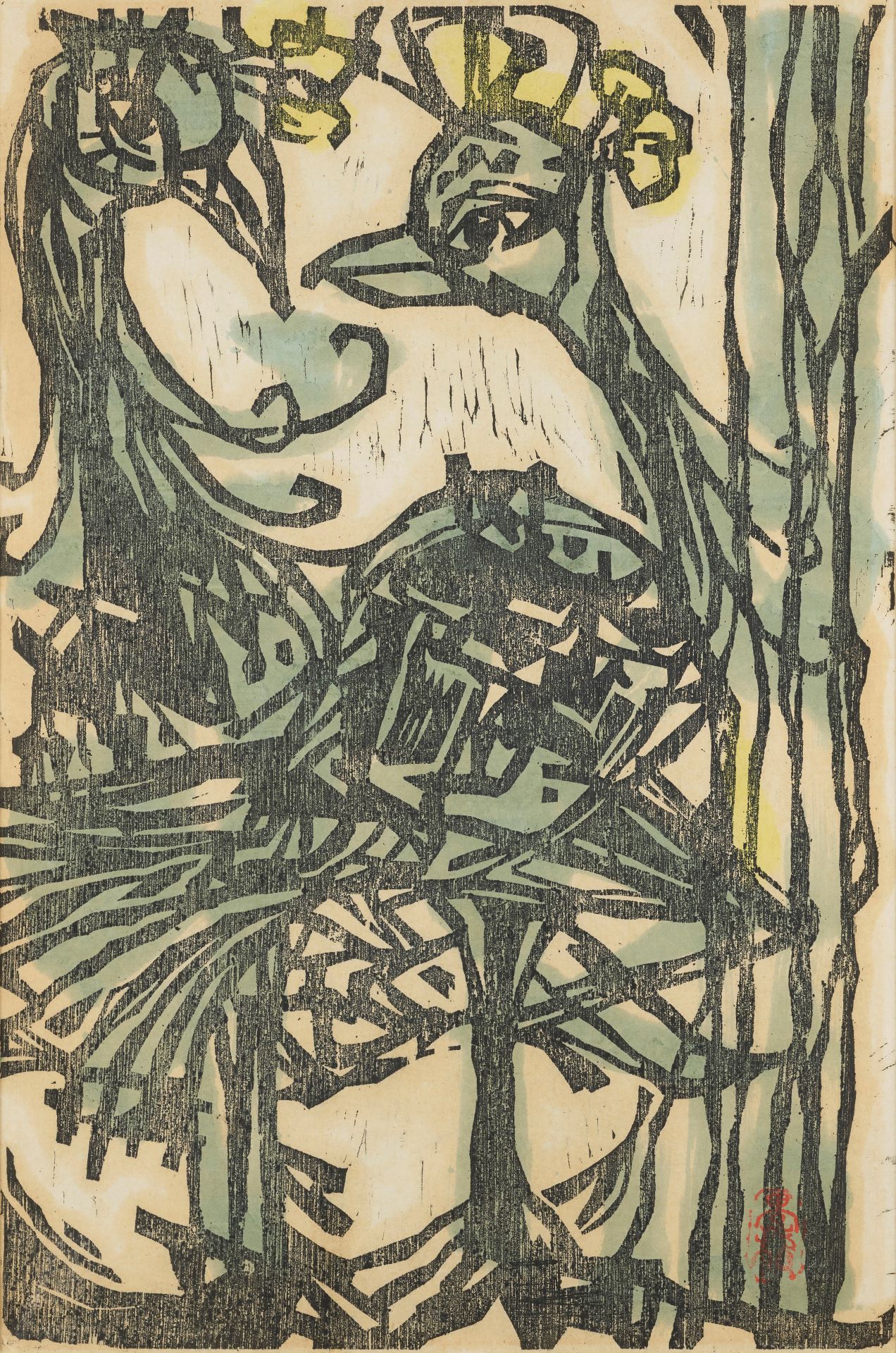
Hayakawa Yoshio, The 5th International Biennial Exhibition of Prints in Tokyo 1966, 1966. offset lithograph, sheet: 100 × 70.7 cm. M+, Hong Kong. [2016.740]. © All rights reserved. Image courtesy of M+, Hong Kong
International Biennial Exhibition of Prints in Tokyo
* Source: MMCA
Related
-

Lee Yil
Lee Yil(1932-1997) was a first-generation critic whose art criticism was based on art theories and greatly impacted the formation of Korean modernism. He was born in Gangseo, Pyeongannam-do Province and his real name is Lee Jinsik. While attending Pyongyang High School, Lee defected to South Korea and went to Gyeongbok High School in Seoul. After graduation, he entered the French Literature Department at Seoul National University but dropped out and moved to Paris. In 1961, he studied archaeology and art history at Sorbonne University. There, he worked as a Paris correspondent for the Chosun Ilbo newspaper. In 1964, he translated and published L’aventure de l’art abstrait (The Adventure of Abstract Art) by Michel Ragon. Returning to Korea in 1965, Lee began practicing art criticism in earnest. In 1966, he joined Hongik University as a professor of art theory, and he held the position for thirty years until his retirement in 1997. He wrote A Trajectory of Contemporary Art that introduced contemporary art of the West in 1974. Among his translated works are Naissance d’un Art Nouveau (Birth of Art Nouveau) (1974) by Michel Ragon, The History of World Painting (1974), and History of Art by H.W. Janson (1984). From the 1980s, he published books on art criticism, including Korean Art: The Face of Today (1982) and Reduction and Expansion of Contemporary Art (1991). After his death, the collections of his posthumous manuscripts, Lee Yil: Art Criticism Journal (1998) and The Critic Lee Yil Anthology in two volumes (2013), were published. Lee Yil’s art criticism activities can be divided largely into two periods. The former period spans from the time he returned from France to the early 1970s. During this period, Lee was interested in anti-art such as Dadaism and Nouveau Réalisme (New Realism). He inspired the formation of the Union Exhibition of Korean Young Artists that was brought together in solidarity by the generation who experienced the April 19 Revolution. Serving as a founding member and theorist of the Korean Avant Garde Association (referred to as AG) established in 1969, he developed criticism that laid the foundation for the formation of avant-garde art that emphasized experimentation. Around 1971 and 1972, he redirected his attention to art reflecting Korean culture and the spirit of Koreans rather than avant-garde focused on resistance. In the latter period, he stressed a “return to the primordial.” With his distinctive critical concepts, such as “reduction and expansion” and “pan-naturalism,” he actively supported the Korean Minimalism school of painters, especially Dansaekhwa artists. Lee’s critical perspective became a cornerstone in the narrative of Korean contemporary art history in the 1970s.
-

International Biennial of Contemporary Color Lithography
The International Biennial of Contemporary Color Lithography was an international print exhibition held from 1950 through 1960 by the Cincinnati Art Museum in Ohio in the U.S. At the time, there was a printmaking boom in the U.S. sparked by the relocation of Atelier 17, a notable Parisian printmaking studio, to New York in 1940. In the 1950s and 1960s, the International Graphic Arts Society (IGAS) was founded, and several special exhibitions on prints were held, including New Expressions in Fine Printmaking: Ideas, Methods, and Materials (Brooklyn Museum, 1952). In addition, institutions for exploring printmaking, such as Pratt-Contemporaries Graphic Arts Center, Tamarind Lithography Workshop, and Universal Limited Art Edition (ULAE), were built. Under these circumstances, Gustave von Groschwitz, a curator of prints at the Cincinnati Art Museum from 1947 to 1963, organized the first biennial of color lithographs in the U.S. Only works created within two years could be submitted to the biennial, allowing two prints per artist. Korean artists had participated in the biennial since 1958. Yoo Kangyul, Kim Choungza, Choi Dukhyu, Kim Sou, Rhee Sangwooc, and Lee Hangsung took part in the fifth edition in 1958. Their participation in the biennial led to the acquisition of some works by the Cincinnati Art Museum. They were Face and Pagoda by Kim Sou, Winter by Rhee Sangwooc, and Silhouette and Buddha’s Spirit by Lee Hangsung. This marked the first overseas debut of contemporary Korean prints. In the sixth edition held in 1960, Mountain Sentiment and Revival by Lee Hangsung and Study by Bae Yoong won prizes. Starting in 1962, the International Biennial of Contemporary Color Lithography was held as a triennial and renamed International Prints.
-

Yoo Kangyul
Yoo Kangyul(1920-1976) was a Korean printmaker and dye craftsman who engaged in diverse activities from the late 1940s through the early 1960s. He entered the Azabu Middle School in Tokyo in 1933 and graduated from the Craft and Design Department at Nihon Art School in 1944. In 1941, while studying in Japan, Yoo’s work was selected for the Japanese Craftspeople Association Exhibition. He received apprenticeship education on dyeing at the Saito Craft Institute. After returning to Korea, Yoo worked as a principal lecturer and researcher at Lacquerware Inlaid with Mother-of-Pearl Training Center and Korean Plastic Arts and Culture Research Institute. In 1958, he received Rockefeller Foundation scholarship to study printmaking at New York University and the Pratt-Contemporaries Graphic Art Centre. He was later appointed as a professor at Hongik University and served until 1976. He was also active as an architectural advisor and interior designer. Among his notable works are the exhibition design for Anti-Communist Exhibition Hall of the Freedom Center (1966) and the Ceramic Mural for the National Assembly (1974). Yoo Kangyul founded the Korean Contemporary Printmaker Association [Hanguk hyeondae panhwaga hyeophoe] in 1968 to develop Korean printmaking. Moreover, he served as a judge of the Korean Art Grand Award Exhibition in 1969, a standing committee member for the construction of the National Museum of Korea in 1970, and a head judge for the National Tourist Folk Art Competition from 1971 to 1976. He won many awards including the Minister of Education Award (1953) and the Prime Minister Award (1954) at the National Art Exhibition (Gukjeon) and a presidential prize for the interior design of the National Museum of Korea (1970). Yoo did not hold a solo exhibition during his lifetime, but in 1978 Kyang Yul Yoo’s Exhibition was organized by his students and the National Museum of Modern Art, Korea (now MMCA). In 1981, Collection of Works by Yoo Kangyul was published. In 2000, his bereaved family donated Yoo’s collection to the MMCA and the National Museum of Korea.






